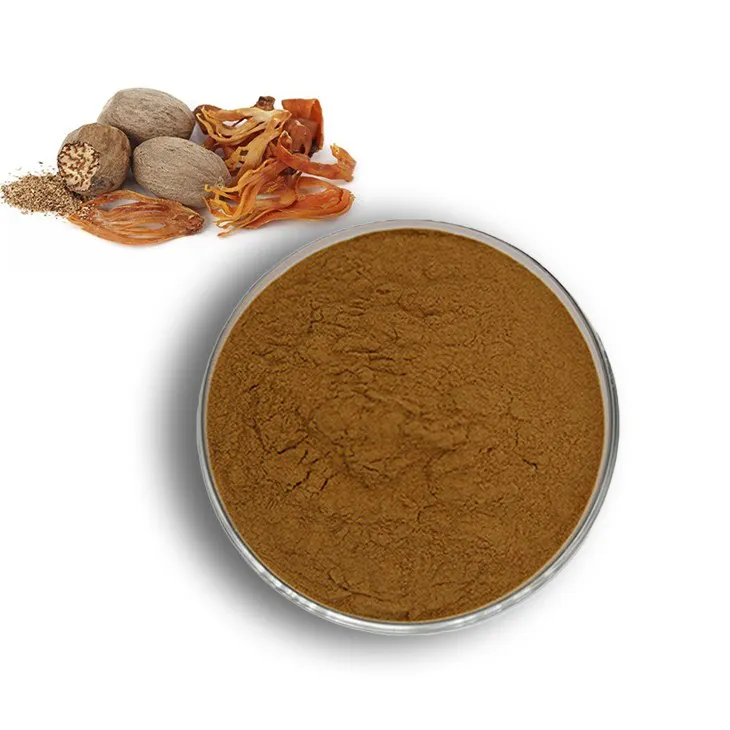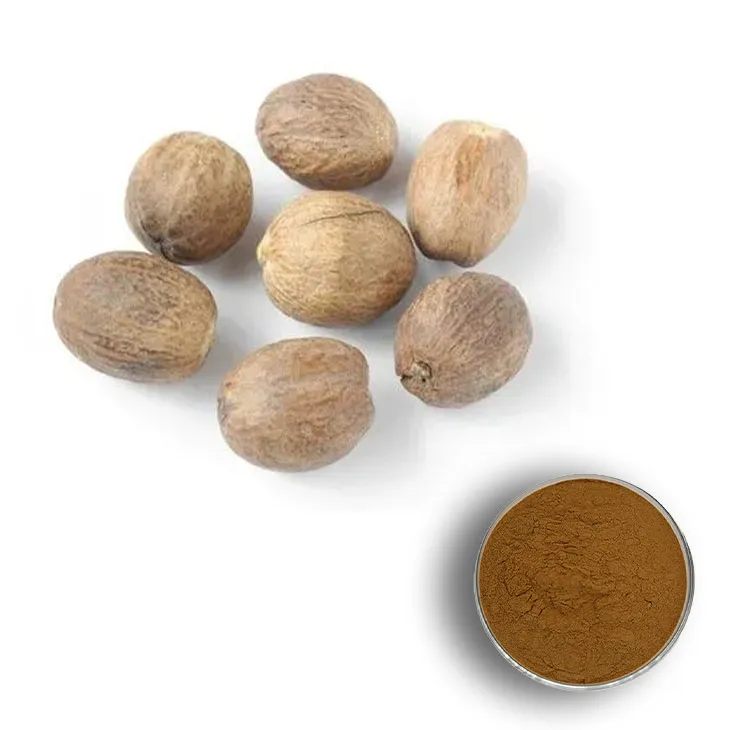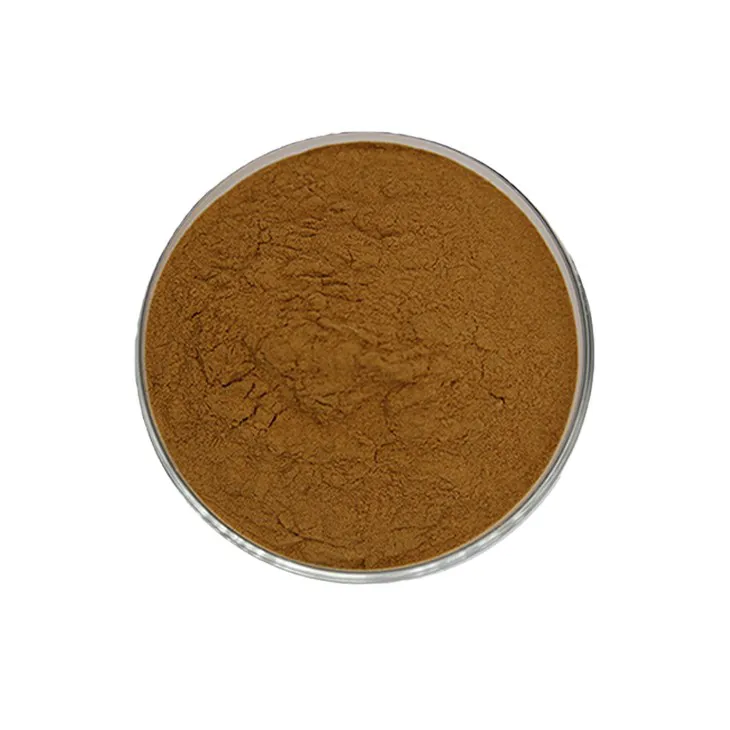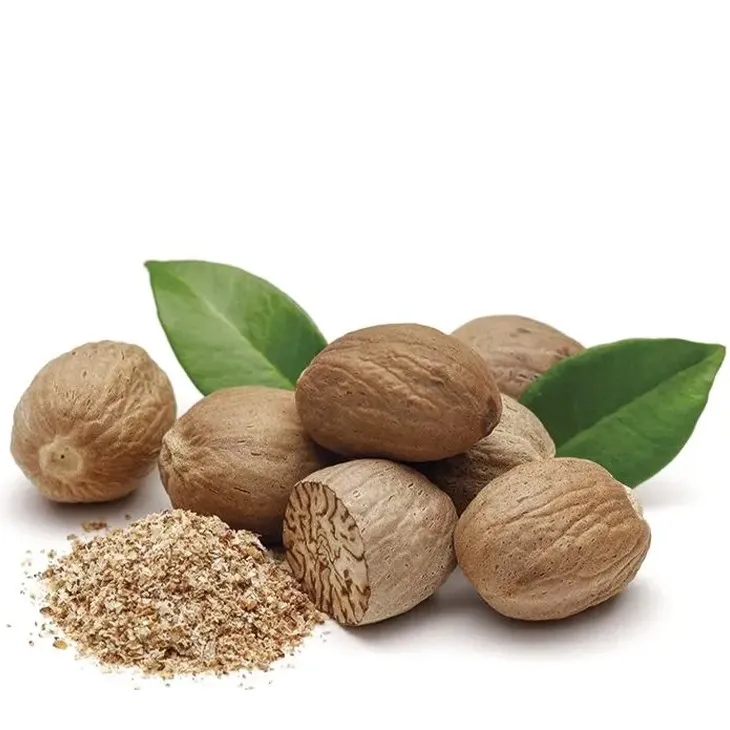- 0086-571-85302990
- sales@greenskybio.com
Nutmeg extract.
2024-11-14

Introduction to Nutmeg Extract
Nutmeg Extract is a substance that has been garnering significant attention in recent times. It is derived from the nutmeg plant, which is famous for its aromatic seeds. The extract is a complex blend of various chemical components. This complexity gives it a wide range of properties and potential applications.

Chemical Constituents of Nutmeg Extract
The chemical makeup of nutmeg extract is intricate. It contains numerous compounds such as myristicin, elemicin, and safrole. These compounds contribute to the unique characteristics of the extract.
Myristicin, for example, has been the subject of much research. It is believed to play a role in some of the biological activities associated with nutmeg extract. However, it also requires careful consideration due to potential toxicity at high levels.

Antimicrobial Activity
One of the most notable features of nutmeg extract is its antimicrobial activity.
Against Bacteria
Nutmeg extract has shown effectiveness against a variety of bacteria. For instance, it can inhibit the growth of Staphylococcus aureus and Escherichia coli. These are common bacteria that can cause various infections in humans. The mechanism of action may involve disrupting the cell membranes of the bacteria or interfering with their metabolic processes.
Against Fungi
In addition to bacteria, nutmeg extract also exhibits activity against fungi. Fungal infections can be difficult to treat, and the potential of nutmeg extract as an antifungal agent is thus of great interest. It has been shown to be effective against certain types of dermatophytes, which are fungi that can infect the skin, hair, and nails.

Traditional Use: Analgesic Properties
In traditional cultures, nutmeg extract has long been utilized for its analgesic properties. People have used it to relieve pain from various sources.
For example, in some traditional medicine systems, it was used to ease headaches or muscle pain. The exact mechanism by which it provides pain relief is not fully understood, but it is thought to involve interactions with the body's pain receptors or modulation of the nervous system.

Immune System Modulation
Research has been exploring the role of nutmeg extract in modulating the immune system.
It is believed that certain compounds in the extract can interact with immune cells, either enhancing or suppressing their activity depending on the context. This potential makes it a candidate for further study in the field of immunology, especially in the development of novel immunomodulatory therapies.
Potential as a Natural Preservative
Given its antimicrobial activity, nutmeg extract has the potential to be used as a natural preservative.
- It can be used in the food industry to prevent the growth of spoilage - causing microorganisms. This is appealing as consumers are increasingly interested in natural alternatives to synthetic preservatives.
- In the cosmetic industry, it can also be used to preserve products, protecting them from microbial contamination and extending their shelf - life.
Safety Considerations
While nutmeg extract has many potential benefits, it also requires strict safety assessment and regulation due to the presence of certain compounds.
Toxic Compounds
As mentioned earlier, some of the compounds in nutmeg extract, such as myristicin, can be toxic in large amounts. High - dose consumption of nutmeg or its extract can lead to symptoms such as nausea, vomiting, and in severe cases, more serious neurological effects.
Regulatory Requirements
- To ensure its proper use, regulatory authorities around the world have set limits on the use of nutmeg extract in various products.
- For example, in the food industry, the amount of nutmeg extract that can be added to a product is carefully regulated to ensure that it does not pose a risk to consumers.
- In the case of nutmeg extract used in medicinal products, it must undergo rigorous testing to prove its safety and efficacy.
Future Research Directions
There are several areas where future research on nutmeg extract could be focused.
Understanding the Mechanisms
- Further research is needed to fully understand the mechanisms underlying its antimicrobial, analgesic, and immunomodulatory activities. This knowledge could lead to the development of more targeted and effective applications.
- For example, understanding exactly how it inhibits the growth of bacteria could help in the design of new antibiotics or antimicrobial agents.
Product Development
- Research could also be directed towards developing new products based on nutmeg extract. This could include novel natural preservatives, pain - relief products, or immunomodulatory therapies.
- However, any product development must take into account the safety aspects and regulatory requirements associated with nutmeg extract.
Conclusion
Nutmeg extract is a highly interesting and potentially valuable substance. Its antimicrobial, analgesic, and immunomodulatory properties, along with its potential as a natural preservative, make it an area of great research interest. However, due to the presence of certain compounds, safety assessment and regulation are crucial to ensure its proper use. Future research will likely uncover more about its mechanisms of action and lead to the development of new products based on this extract.
FAQ:
What are the main chemical constituents in nutmeg extract?
The nutmeg extract is a complex mixture of chemical constituents. Some of the well - known components include myristicin, elemicin, and safrole. However, it contains many other substances as well, which together contribute to its various properties such as antimicrobial, analgesic, and potential effects on the immune system.
How does nutmeg extract show antimicrobial activity?
The antimicrobial activity of nutmeg extract is due to its chemical composition. The various compounds in the extract interact with the cell membranes and internal mechanisms of bacteria and fungi. For example, they may disrupt the cell wall synthesis or interfere with the metabolic processes of the microorganisms, thereby inhibiting their growth and survival.
Can nutmeg extract be used directly as a pain reliever?
In traditional cultures, nutmeg extract has been used for its analgesic properties. However, it cannot be used directly as a mainstream pain reliever without proper processing and safety assessment. The extract may contain compounds that could be harmful if consumed in large amounts or without proper preparation. Currently, more research is needed to develop safe and effective ways to utilize its pain - relieving potential.
What is the role of nutmeg extract in modulating the immune system?
Research on the role of nutmeg extract in modulating the immune system is still in progress. Preliminary studies suggest that certain compounds in the extract may interact with immune cells, such as macrophages and lymphocytes. This interaction could potentially enhance or regulate the immune response, but the exact mechanisms are not fully understood yet.
Why does nutmeg extract need strict safety assessment?
Nutmeg extract contains certain compounds like myristicin, which can have toxic effects if consumed in excessive amounts. For example, high levels of myristicin may cause hallucinations, nausea, and other adverse effects. Therefore, to ensure its safe use, especially in products like natural preservatives or potential medicinal applications, strict safety assessment and regulation are necessary.
Related literature
- Analysis of Chemical Constituents in Nutmeg Extract"
- "Antimicrobial Properties of Nutmeg Extract: A Comprehensive Review"
- "Traditional and Modern Perspectives on Nutmeg Extract's Analgesic Effects"
- "The Immunomodulatory Role of Nutmeg Extract: Current Research and Future Directions"
- "Safety Considerations in the Use of Nutmeg Extract"
- ▶ Hesperidin
- ▶ citrus bioflavonoids
- ▶ plant extract
- ▶ lycopene
- ▶ Diosmin
- ▶ Grape seed extract
- ▶ Sea buckthorn Juice Powder
- ▶ Beetroot powder
- ▶ Hops Extract
- ▶ Artichoke Extract
- ▶ Reishi mushroom extract
- ▶ Astaxanthin
- ▶ Green Tea Extract
- ▶ Curcumin Extract
- ▶ Horse Chestnut Extract
- ▶ Other Problems
- ▶ Boswellia Serrata Extract
- ▶ Resveratrol Extract
- ▶ Marigold Extract
- ▶ Grape Leaf Extract
- ▶ blog3
- ▶ blog4
- ▶ blog5
-
Organic Tongkat Ali extract powder factory.
2024-11-14
-
How to make powder with ashwagandha extract.
2024-11-14
-
Rosehip extract manufacturers from China.
2024-11-14
-
The best cat's claw extract in nature.
2024-11-14
-
Chinese Dandelion Leaf Extract Suppliers.
2024-11-14
-
Lemon Extract
2024-11-14
-
Pueraria Lobata Extract
2024-11-14
-
Konjac Powder
2024-11-14
-
White Willow Bark Extract
2024-11-14
-
Hops Extract
2024-11-14
-
Grapefruit Seed Extract Powder
2024-11-14
-
Resveratrol extract
2024-11-14
-
Coix Seed Extract
2024-11-14
-
Almond Extract Powder
2024-11-14
-
Cat Claw Extract
2024-11-14





















